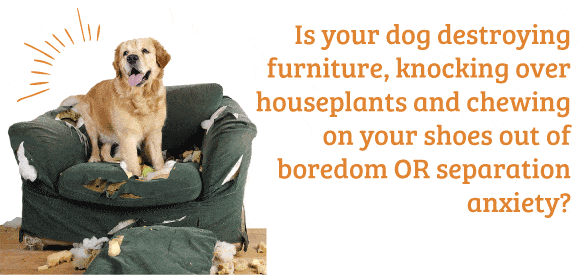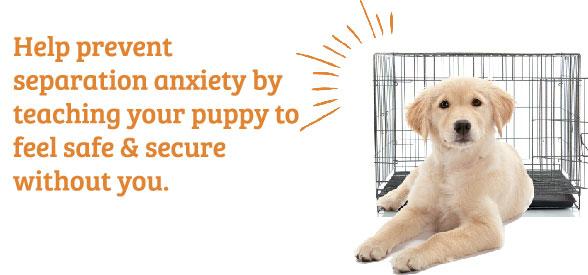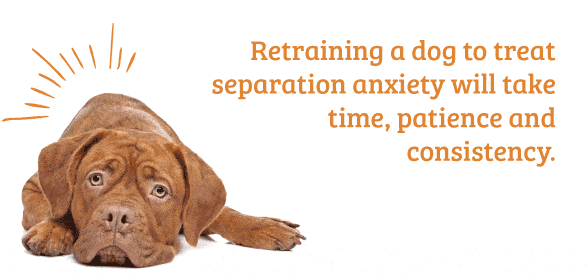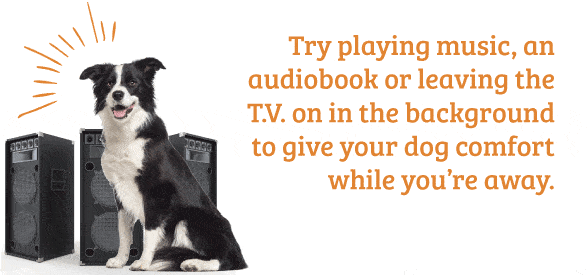Your cart is currently empty.
TLC Pet Food discusses separation anxiety in dogs, including its causes, symptoms, and what to do if your pup struggles with it.
TLC Pet Food discusses separation anxiety in dogs, including its causes, symptoms, and what to do if your pup struggles with it.
When your dog is showing signs of separation anxiety, it is both heartbreaking and frustrating. We love our pups and enjoy our time with them, but the reality of work, school, and life, in general, make it impossible to spend every waking minute with them. We’ve broken down how to prevent the onset of separation anxiety in dogs, what to look for to identify it correctly and how you can give your dog the confidence they need to spend time on their own.
Some of the symptoms of separation anxiety in dogs disguise themselves as aggression, regression, boredom, or vice versa. To resolve the unwanted behaviors your pup is exhibiting, it’s essential to understand the root cause. Is your puppy soiling all over the house while you’re away because they’re experiencing stress and anxiety, or is it an underlying medical issue? Are they destroying Anything they can get their paws on while you’re away out of boredom, or is it a desperate attempt to escape the confines of their dedicated space?

Most symptoms for separation anxiety in dogs will begin because of a change in routine (ie., the kids going back to school, you returning to work) and will occur while you’re out of sight or away from the house completely. You also may notice some of the behaviors beginning as you prepare to leave the house (packing your lunch every morning, grabbing your keys, etc.).
Some things you can do to determine if your pup is truly experiencing stress, include:
Once you have ruled out other possibilities for their behavior; use the following tips to prevent or reverse the signs and symptoms of separation anxiety.

Providing your puppy with the confidence to be apart from their humans begins as soon as they’re ready for training. Use TLC Whole Life Dog Biscuits to reward behavior you want to see and in this case, ignore the behavior you don’t.
You want them to learn from an early age that:
You want to AVOID teaching them that:

Separation anxiety in dogs is much easier to prevent than it is to reverse, however, the following tips can be used for both training a puppy or retraining a dog experiencing symptoms. Retraining will take time but with a little patience and consistency from the whole family, you can help your dog learn to feel secure when they’re left alone.
PREPARE, PREPARE, PREPARE
Have your puppy become familiar with the space they’ll be occupying when left alone over time. Whether a crate, a room, or part of the house, let them explore and sniff their way to comfort. Slowly have them spend longer intervals of time in this space alone. Start with leaving the area and progress to short trips and so on.
Although sometimes hard to resist, avoid rewarding unwanted behaviors with affection and attention. Even reprimanding your pup can be viewed as a reward if they’re looking for attention. If your puppy begins barking or whining from their crate, wait until they’ve stopped before entering the room. When they’re calm and ready, open the door and give them a TLC Whole Life Dog Biscuit. If they follow you around, nudging your leg, or pounce on you the second you walk through the door, ignore them. Wait until they’ve calmed down, are sitting patiently and then give them the attention.
HINT: TLC Whole Life Dog Biscuits can be broken into pieces for training. Packed with wholesome, natural ingredients and including glucosamine and chondroitin for healthy hips and joints; TLC biscuits are a healthy reward your pup will love.
Add biscuits to your order today!
For some of us, leaving our dogs for work or an extended period of time can be just as stressful as it is on them. Regardless, avoid making a big deal about your departure. Our pups look to us for cues on how to feel, when we exhibit signs of stress or anxiety, their bound to pick up on it. You need to treat your leaving as “no big deal”. You’ll be back.
Avoid creating a long drawn out routine that signals your departure. Say goodbye if you have to but keep it short or avoid it altogether if you can. The idea is to make your coming and going a normal and unimportant aspect of daily life. Fit your snuggles in well before leaving. Even sensing that you’re about to leave can cause a pup with separation anxiety stress, so not making a fuss and carrying on as normal will help to keep things calm.
Some dogs respond well to a little distraction. Try leaving the T.V. on low, playing music, a sound machine or audio book. Just the feeling of humans being present can help to keep an otherwise anxious pup calm.

The last thing we want is to prolong suffering for our pets. If your dog happens to have a severe case of separation anxiety (to the point where they are injuring themselves when left alone), your vet may recommend medication to keep them calm. This should be considered a temporary solution and used in combination with efforts to retrain your dog to feel secure and confident, no matter if they’re close by or on their own.